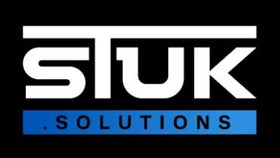From Loose to Secure: How Retaining Compounds & Threadlockers Can Save Your Assemblies
SHOP RETAINING COMPOUNDS AND THREADLOCKERS
When it comes to assembling products or equipment, loose or insecure connections can result in costly and dangerous consequences. That's where retaining compounds and threadlockers come into play. These innovative products provide a reliable and effective solution for keeping assemblies secure and preventing loosening over time.
Retaining compounds are liquid adhesives that fill the gaps between mating surfaces, creating a strong bond that enhances load-bearing capabilities. Threadlockers, on the other hand, are specially designed for securing threaded fasteners by preventing vibrations, leakage, and loosening.
By incorporating retaining compounds and threadlockers into your manufacturing process, you can ensure the durability and longevity of your assemblies. These products offer superior resistance to temperature, corrosion, and chemicals, making them ideal for a wide range of industries, including automotive, aerospace, and manufacturing.
Whether it's preventing bolts from loosening in critical applications or ensuring the longevity of mechanical seals, retaining compounds and threadlockers are essential tools for any assembly process. Discover how these products can save your assemblies from costly failures and improve overall product performance.
The importance of secure assemblies
When it comes to assembling products or equipment, loose or insecure connections can result in costly and dangerous consequences. That's where retaining compounds and threadlockers come into play. These innovative products provide a reliable and effective solution for keeping assemblies secure and preventing loosening over time.
Retaining compounds are liquid adhesives that fill the gaps between mating surfaces, creating a strong bond that enhances load-bearing capabilities. Threadlockers, on the other hand, are specially designed for securing threaded fasteners by preventing vibrations, leakage, and loosening.
By incorporating retaining compounds and threadlockers into your manufacturing process, you can ensure the durability and longevity of your assemblies. These products offer superior resistance to temperature, corrosion, and chemicals, making them ideal for a wide range of industries, including automotive, aerospace, and manufacturing.
Whether it's preventing bolts from loosening in critical applications or ensuring the longevity of mechanical seals, retaining compounds and threadlockers are essential tools for any assembly process. Discover how these products can save your assemblies from costly failures and improve overall product performance.
Common challenges in assembly retention
In any industry, the importance of secure assemblies cannot be overstated. Whether it's a small electronic device or a massive industrial machine, the integrity of the assembly is crucial for optimal performance and safety. Loose connections can lead to a myriad of problems, including equipment failure, leaks, and even accidents.
One of the main challenges in assembly retention is the issue of vibration. Vibrations can cause fasteners to gradually loosen over time, compromising the stability of the assembly. Additionally, external factors such as temperature changes, chemicals, and corrosion can further weaken the connection.
What are retaining compounds?
Retaining compounds are a type of liquid adhesive that fills the gaps between mating surfaces. They are specifically formulated to provide a strong bond that enhances the load-bearing capabilities of an assembly. These compounds are typically applied to cylindrical parts, such as bearings, bushings, and shafts, to create a secure and durable connection.
The key advantage of retaining compounds is their ability to eliminate gaps and create a tight fit between parts. This not only improves the overall strength and stability of the assembly but also helps distribute the load evenly, reducing stress concentration points. Retaining compounds also provide excellent resistance to temperature variations, corrosion, and chemicals, ensuring long-term durability.
Benefits of using retaining compounds
Using retaining compounds in your assembly process offers several significant benefits. Firstly, these compounds improve the overall load-bearing capabilities of the assembly, allowing it to withstand higher levels of stress and vibration. This is particularly crucial in applications where heavy loads, rapid movements, or extreme conditions are involved.
Secondly, retaining compounds help prevent fretting corrosion, a common problem in assemblies with small movements or vibrations. Fretting corrosion occurs when two surfaces rub against each other, leading to wear and eventually corrosion. By filling the gaps between mating surfaces, retaining compounds eliminate the possibility of fretting corrosion, ensuring long-lasting performance.
Thirdly, retaining compounds provide excellent resistance to temperature variations. This is especially important in applications where extreme temperatures are present, as conventional adhesives may fail under such conditions. Whether it's high-temperature environments or freezing temperatures, retaining compounds maintain their integrity, ensuring a secure and reliable connection.
Types of retaining compounds and their applications
There are various types of retaining compounds available, each designed for specific applications. Here are some common types:
1. General-purpose retaining compounds: These are versatile compounds that work well in a wide range of applications. They provide a strong bond and are suitable for most metal-to-metal assemblies.
2. High-strength retaining compounds: These compounds offer exceptional strength and are ideal for assemblies that experience heavy loads, high pressures, or extreme vibrations.
3. Flexible retaining compounds: Designed for assemblies that require a certain degree of flexibility, these compounds can absorb vibrations and movements without compromising the overall integrity of the assembly.
4. Anaerobic retaining compounds: These compounds cure in the absence of air and are commonly used in applications where a hermetic seal is required. They provide excellent resistance to chemicals and are often used in the automotive and aerospace industries.
What are threadlockers?
Threadlockers are adhesives specifically formulated for securing threaded fasteners. They prevent self-loosening caused by vibrations, temperature changes, or external forces. Threadlockers are typically applied to the threads of bolts, screws, and nuts, creating a strong bond that keeps them securely in place.
Threadlockers come in different strengths, ranging from low-strength for easy disassembly to high-strength for permanent locking. They are available in liquid form and cure when confined in the absence of air, filling the gaps between threads and preventing any movement that could lead to loosening.
Benefits of using threadlockers
Using threadlockers in your assembly process offers several benefits. Firstly, they provide a reliable and long-lasting solution for preventing self-loosening. Whether it's in critical applications such as automotive engines or everyday consumer products, threadlockers ensure that threaded fasteners stay in place, even under extreme conditions.
Secondly, threadlockers help reduce the need for constant maintenance or retightening of fasteners. By keeping the assembly secure, they eliminate the risk of unexpected failures or malfunctions due to loose connections. This not only saves time and effort but also minimizes downtime and increases productivity.
Additionally, threadlockers help improve the overall performance and lifespan of threaded assemblies. By preventing vibrations and movement, they reduce stress on the fasteners, preventing fatigue or damage. This results in assemblies that can withstand harsh conditions, ensuring long-term reliability.
Types of threadlockers and their applications
There are different types of threadlockers available, each with its own unique characteristics. Here are the most common types:
1. Low-strength threadlockers: These threadlockers offer easy disassembly for applications that may require periodic maintenance or adjustments. They provide sufficient locking strength to prevent self-loosening but can be easily disassembled using standard hand tools.
2. Medium-strength threadlockers: These threadlockers provide a balance between locking strength and disassembly ease. They are suitable for a wide range of applications, offering reliable locking without making disassembly overly difficult.
3. High-strength threadlockers: Designed for applications that require permanent locking, high-strength threadlockers provide exceptional resistance to vibration, shock, and extreme temperatures. Disassembly may require the use of heat or specialized tools.
4. Wicking grade threadlockers: These threadlockers are specifically formulated to wick along the threads of pre-assembled fasteners. They are ideal for securing already assembled components or hard-to-reach areas where traditional application methods are not possible.
Conclusion and recommendations for using retaining compounds and threadlockers
In conclusion, retaining compounds and threadlockers are essential tools for ensuring the durability, reliability, and safety of assemblies. By incorporating these products into your manufacturing process, you can prevent costly failures, reduce maintenance needs, and improve overall product performance.
When choosing retaining compounds and threadlockers, it's important to consider the specific requirements and conditions of your applications. Consult with industry experts or manufacturers to determine the most suitable product for your needs.
Remember to follow the manufacturer's instructions for proper application and curing times. Improper application or curing can compromise the effectiveness of these products. Additionally, regular inspections and maintenance should be conducted to ensure the continued performance of the assembly.
In conclusion, investing in high-quality retaining compounds and threadlockers is a wise decision for any industry that relies on secure assemblies. From automotive to aerospace, these products offer a reliable and effective solution for preventing loosening, enhancing load-bearing capabilities, and improving overall product performance. Don't compromise the integrity of your assemblies - choose retaining compounds and threadlockers for peace of mind and long-lasting durability.
















Leave a comment